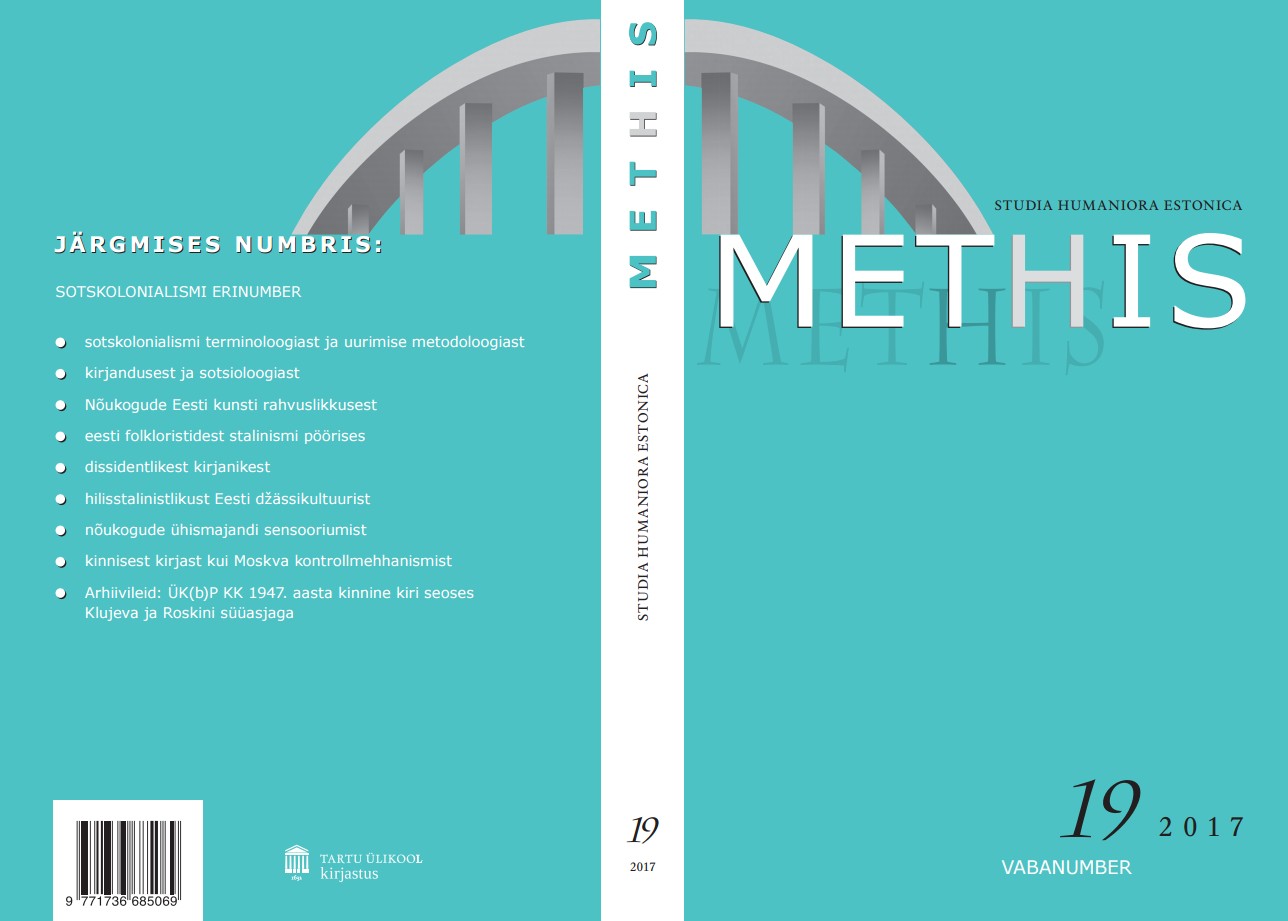Enn Koemetsa kirjad Heino Liimetsale 1942–1963 ehk kuidas on kasvatatud teadlaseks / Enn Koemets’ letters to Heino Liimets 1942–1963 or how scientists are raised
DOI:
https://doi.org/10.7592/methis.v15i19.13443Abstract
Artikkel analüüsib huvitavat epistolaarset materjali Teise maailmasõja aastatest ja sellele järgnenud ajast – kasvatusteadlase Enn Koemetsa kirju õepoeg Heino Liimetsale, kellest sai hiljem samuti pedagoogikaõppejõud ja akadeemik. Kirjades võib tähele panna Koemetsa teoreetilisi seisukohti õppimisest ja õpetamisest ning nende rakendamist eesmärgiga kasvatada õepojast teadlast ja õppejõudu. Tervikuna ja koos kommentaaridega ilmuvad kuus Koemetsa kirja aastatest 1942–1943.
When discussing Estonian educational science, we need to talk about the Koemets-Liimets family where six people from three generations have been or still are active in this field. Such career choice was first made by the pedagogue, educational scientist and psychologist Enn Koemets (1911–1973). 50 letters, found in the personal home archive of the author of the present article, offer interesting material for a theoretical treatment of Enn Koemets’ biographical data as well as of the growing of Heino Liimets’ into a scientist.
The present article publishes in full six letters which Koemets wrote in Tartu from 1942–1943 and sent to Valga to his nephew Heino Liimets (1928–1989), who studied at the Valga Gymnasium and was 14 years old in 1942. Later, Heino Liimets became a pedagogue, educational scientist and a professor as well.
First, the article discusses why and how can such continuity of choosing again and again one and the same specialty develop in a family. Looking at it from the viewpoint of educational philosophy, we could answer that this could well be caused by such phenomena as education and growth development. A person does not become a scientist only by studying at some educational institution and passing some specific curriculum, but they have to grow and be raised into being a scientist due to certain conditions or, due to the fact that people of different generations live in the same spiritual space, communicating with each other based on certain ideas, values and principles.
Enn Koemets’ letters to his nephew show, on the one hand, the spiritual reality full of ideals and, on the other hand, the real, everyday environment centred on home. We can say without doubt that Koemets attempted to live his real life according to the pedagogical and psychological ideas which he had formulated in his studies. He knowingly and purposefully raised his nephew to be a scientist, a teacher and a colleague at the university.
Eleven letters originate from the earlier period of the correspondence (1942–1945), from the time Heino Liimets was a gymnasium student. All these letters are characterised by the fact that Enn Koemets inspired and invited his nephew to enter his own spiritual space. According to the ideas he had published in his research, he taught the young man in the way that would activate his self-education. Koemets wrote to the boy very seriously about the books he was reading and topics he was studying because he knew that the existence of a model and the direct immediate inspiration are essential for the emergence of ideals and higher spiritual aspirations. We can see that Koemets had undertaken the task of teaching the young man to study “in a right way” and to acquire skills and tools (foreign languages, skills for thorough and long-time concentration and for doing research, time management, etc.) necessary for a scientist. He consistently guided the young man in widening his cultural horizons, suggested reading materials and information sources, knowing that a good scientist cannot do without such knowledge and skills. The roots of Koemets’ own aspirations and values should be searched for at the Valga All-boys Gymnasium where he had studied from 1924–1929.
Among Koemets’ friends at the gymnasium and at the university was the writer Bernard Kangro, who immigrated to Sweden in 1944. Thanks to Kangro’s novels of the Tartu series, we can find both the Koemets-Liimets’ age-old family residence—the Koemetsa Farm in the Koemetsa Village in Võrumaa County—and Enn Koemets himself captured in a fictional reality. The Enn Koemets, who has been depicted as one of the main characters of Kangro’s novels—the energetic and bright Pärdijaak—was in his letters a similar inspirer and model for his nephew Heino Liimets.


